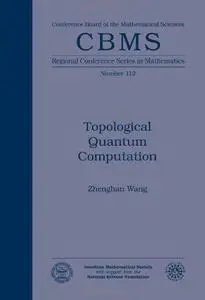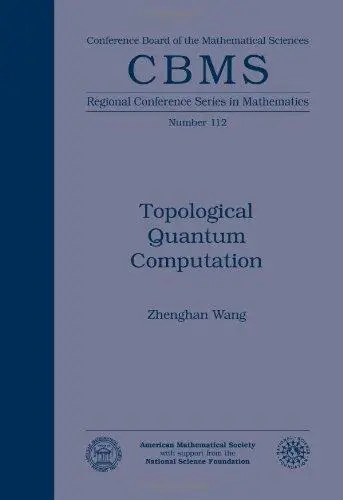Topological quantum computation By Zhenghan Wang
2010 | 135 Pages | ISBN: 0821849301 | DJVU | 2 MB
2010 | 135 Pages | ISBN: 0821849301 | DJVU | 2 MB
The purpose of this monograph is to provide the mathematically literate reader with an accessible introduction to the theory of quantum computing algorithms, one component of a fascinating and rapidly developing area which involves topics from physics, mathematics, and computer science. The author briefly describes the historical context of quantum computing and provides the motivation, notation, and assumptions appropriate for quantum statics, a non-dynamical, finite dimensional model of quantum mechanics. This model is then used to define and illustrate quantum logic gates and representative subroutines required for quantum algorithms. A discussion of the basic algorithms of Simon and of Deutsch and Jozsa sets the stage for the presentation of Grover's search algorithm and Shor's factoring algorithm, key algorithms which crystallized interest in the practicality of quantum computers. A group theoretic abstraction of Shor's algorithms completes the discussion of algorithms. The last third of the book briefly elaborates the need for error- correction capabilities and then traces the theory of quantum error- correcting codes from the earliest examples to an abstract formulation in Hilbert space. This text is a good self-contained introductory resource for newcomers to the field of quantum computing algorithms, as well as a useful self-study guide for the more specialized scientist, mathematician, graduate student, or engineer. Readers interested in following the ongoing developments of quantum algorithms will benefit particularly from this presentation of the notation and basic theory "Topological quantum computation is a computational paradigm based on topological phases of matter, which are governed by topological quantum field theories. In this approach, information is stored in the lowest energy states of many-anyon systems and processed by braiding non-abelian anyons. The computational answer is accessed by bringing anyons together and observing the result. Besides its theoretical esthetic appeal, the practical merit of the topological approach lies in its error-minimizing hypothetical hardware: topological phases of matter are fault-avoiding or deaf to most local noises, and unitary gates are implemented with exponential accuracy. Experimental realizations are pursued in systems such as fractional quantum Hall liquids and topological insulators. This book expands on the author's CBMS lectures on knots and topological quantum computing and is intended as a primer for mathematically inclined graduate students. With an emphasis on introducing basic notions and current research, this book gives the first coherent account of the field, covering a wide range of topics: Temperley-Lieb-Jones theory, the quantum circuit model, ribbon fusion category theory, topological quantum field theory, anyon theory, additive approximation of the Jones polynomial, anyonic quantum computing models, and mathematical models of topological phases of matter."--Publisher's description. Temperley-Lieb-Jones theories -- Quantum circuit model -- Approximation of the Jones polynomial -- Ribbon fusion categories -- (2+1)-TQFTs -- TQFTs in nature -- Topological quantum computers -- Topological phases of matter -- Outlook and open problems



